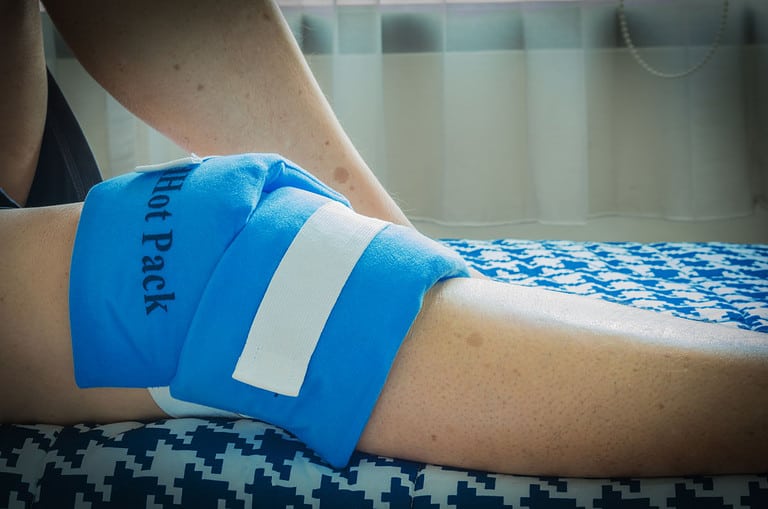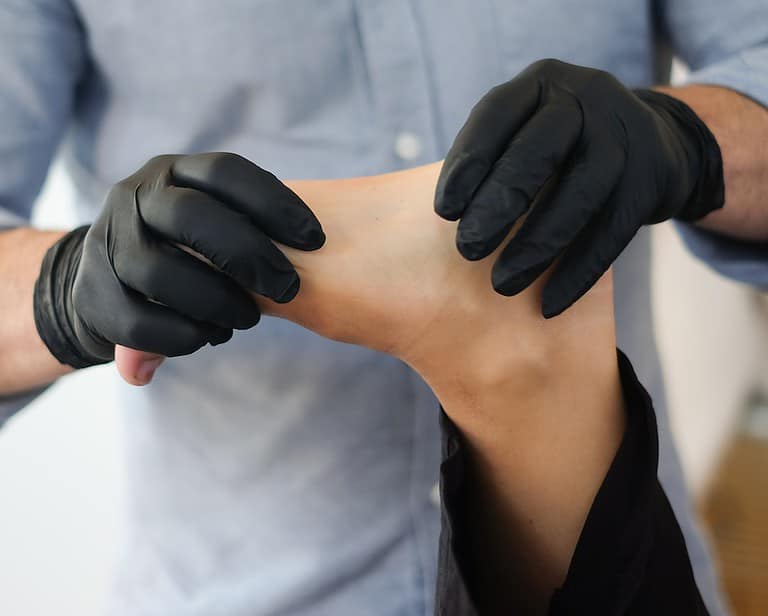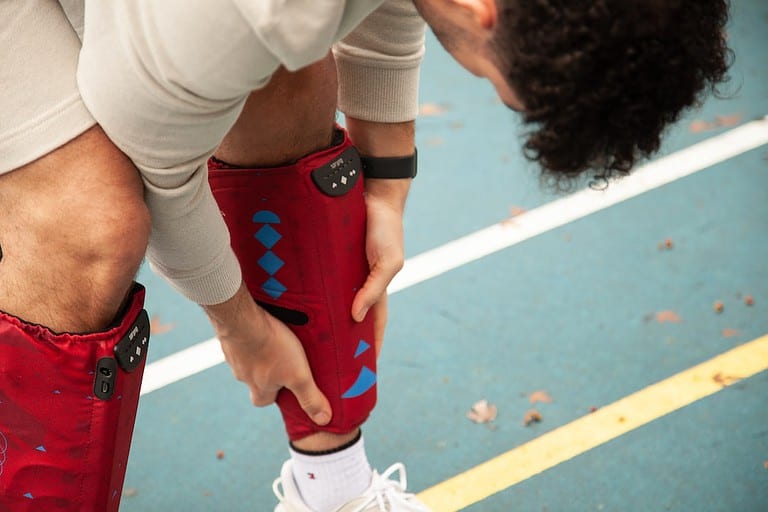What Is Ischemic Compression Therapy in Modern Healthcare?
What is ischemic compression therapy? Ischemic compression therapy is a type of massage technique that can help alleviate pain and tension in the body. It involves using pressure to target specific points on the body, which helps to improve circulation and reduce inflammation.
Ischemic compression therapy has been used for centuries as an effective form of treatment for many conditions including chronic back pain, muscle spasms, headaches, arthritis, sports injuries, and more. In this article, we will explore what is ischemic compression therapy exactly, how it works, who can benefit from it, and how best to prepare for a session.
By understanding these basics, you’ll be able to determine if ischemic pressure could be right for you or your loved ones.
Table of Contents
What is Ischemic Compression Therapy?
Ischemic compression therapy involves applying direct pressure to a painful area in order to reduce inflammation and restore normal function. This type of treatment can be used for both acute and chronic conditions, as well as post-surgical rehabilitation.
There are many benefits associated with ischemic compression therapy including improved circulation, reduced muscle tension/spasms, increased range of motion (ROM), pain reduction, and better mobility.
Additionally, it can help improve posture by strengthening weak muscles while stretching tight ones. It also helps break up scar tissue which can lead to better healing outcomes.
Ischemic pressure is a natural, non-invasive way to relieve pain and tension in the body. By understanding how it works and the potential side effects, you can decide if this therapy is right for your family’s health needs. Next, we will explore how ischemic compression therapy works.
How Does Ischemic Compression Therapy Work?
Ischemic compression therapy is a type of physical therapy that uses ischemic pressure to reduce pain and inflammation in the body. It works by applying pressure to specific trigger points which can cause pain when compressed. This pressure helps release tension in the muscles and reduces inflammation, resulting in decreased pain and improved mobility.
Application Techniques
Ischemic compression therapy involves using a variety of techniques such as deep tissue massage, stretching, and joint mobilization to target specific areas of discomfort or dysfunction. Ischemic pressure may be applied with hands, elbows, knuckles, or tools such as foam rollers or tennis balls for deeper penetration into muscle tissues. These techniques help relax tight muscles while improving circulation throughout the body for better healing results.
Potential Side Effects
Although ischemic compression therapy has many benefits, there are some potential side effects that should be considered before beginning treatment. These include soreness at the site of treatment due to increased blood flow, bruising, temporary swelling, and skin irritation from prolonged contact with massage tools or clothing during treatment sessions.
If any of these occur after receiving ischemic compression therapy, consult your healthcare provider for further evaluation and advice on how best to manage these side effects.
Ischemic pressure is a powerful and effective treatment option for many musculoskeletal conditions, but it is important to seek professional guidance before undergoing this type of therapy. Next, we will explore who can benefit from ischemic compression therapy.
Who Can Benefit from Ischemic Compression Therapy?
Ischemic compression therapy can be used to treat various conditions, including muscle and joint pain, headaches, and even stress-related issues. This form of treatment has been found to be beneficial for many people who suffer from chronic pain or discomfort.
Who Should Try Ischemic Compression Therapy?
Ischemic compression therapy may be effective in relieving symptoms of:
- Neck and back pain.
- Sciatica.
- Carpal tunnel syndrome.
- Fibromyalgia.
- Tension headaches.
- TMJ disorder (temporomandibular joint dysfunction).
- Plantar fasciitis (heel pain).
- Shoulder impingement syndrome (rotator cuff tendonitis).
- Tennis elbow (lateral epicondylitis).
- Golfer’s elbow (medial epicondylitis).
It may also help reduce inflammation in areas affected by arthritis or other inflammatory conditions.
Who Should Not Receive Ischemic Compression Therapy?
There are some individuals who should not receive ischemic compression therapy due to their medical history or current health status. Those with active infections or open wounds should avoid this form of treatment until the infection has cleared up completely.
Additionally, those taking blood thinners such as warfarin should consult their doctor before receiving any type of manual therapy since it could increase the risk of bleeding.
Individuals who have had recent surgery should wait at least four weeks before beginning ischemic compression treatments in order to ensure proper healing.
If you are considering ischemic compression therapy, seek professional guidance from an experienced practitioner prior to starting any treatment to ensure safety and maximum results. A qualified therapist will assess your condition carefully before recommending any specific course of action so you can get the most out of your experience while avoiding potential risks.
Next, let’s discuss what to expect from an ischemic compression session.
(Source)
What to Expect During an Ischemic Compression Session
An ischemic compression session typically lasts between 10 and 30 minutes. The therapist will use their hands or a tool such as a tennis ball, lacrosse ball, or foam roller to apply pressure to the affected area. This pressure helps release tension in the muscles and reduce pain.
You may experience some discomfort during the session but it should not be unbearable.
Before your appointment, you should wear comfortable clothing that allows easy access to the areas of your body that need treatment. It’s also important to drink plenty of water before and after your session so that your body can flush out toxins released during treatment.
Avoid eating right before your appointment as this can cause nausea during treatment.
After receiving ischemic compression therapy, you should rest for at least 24 hours and don’t overexert yourself physically.
Drink plenty of fluids but avoid alcohol to help reduce inflammation caused by ischemia-reperfusion injury (IRI).
You can also apply ice packs intermittently throughout the day if there is swelling in the treated areas.
FAQs in Relation to What is ischemic Compression Therapy
What is ischemic compression used for?
Trigger point release (formerly ischemic compression) is a massage technique that consists of moderate compression, typically applied with the fingers, to the MTrP. Application of this technique to MTrP results in a positive effect on the pain-pressure threshold.
How long should you apply pressure to a trigger point?
To relieve the pain and muscle tension, you should press the trigger point for 20-30 seconds before releasing it. You can repeat the process a few times until the discomfort has dissipated.
What happens when a trigger point is released?
Trigger points release tension by disrupting a positive loop that sends signals to your brain. This can happen at any stage. Massage can help by relaxing muscles, increasing circulation, and getting rid of waste.
Conclusion
What is ischemic compression therapy? This type of trigger point massage can help reduce swelling, increase range of motion, and improve overall function. If you are experiencing any type of chronic pain or acute pain that has not responded to other treatments, it may be worth considering ischemic compression therapy as an option.
As always, consult with your doctor before beginning any new form of treatment.
Are you looking for ways to make your family healthier and more independent? Ischemic compression therapy is an effective, non-invasive solution that can help. This natural healing technique utilizes pressure from a device such as massage tools or elastic bands to reduce pain in areas of the body where blood flow has been reduced due to injury or disease.
It’s easy, safe, and cost-effective – so why not give it a try today? With Smart Living Now, you have access to all the resources needed to start on your path toward better health!







